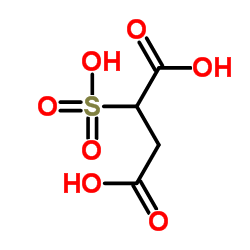Solvent and rotational relaxation of coumarin-153 and coumarin-480 in ionic liquid (1-butyl-3-methylimidazolium tetrafluoroborate) modified sodium 1,4-bis(2-ethylhexyl) sulfosuccinate (NaAOT) micelle.
Vishal Govind Rao, Chiranjib Banerjee, Sarthak Mandal, Surajit Ghosh, Nilmoni Sarkar
Index: Spectrochim. Acta. A. Mol. Biomol. Spectrosc. 102 , 371-8, (2013)
Full Text: HTML
Abstract
Understanding ion transport dynamics, structure of surfactant aggregates in ionic liquids or ionic liquid/water solutions are quite interesting and potentially important due to widespread applications of surfactant-based systems. In this manuscript we have investigated the effect of 1-butyl-3-methylimidazolium tetrafluoroborate (bmimBF(4)) addition on solvent and rotational relaxation of coumarin-153 (C-153) and coumarin-480 (C-480) in aqueous solution of sodium 1,4-bis(2-ethylhexyl) sulfosuccinate (NaAOT) using steady state and picosecond time resolved fluorescence spectroscopy. The strong adsorption of the bmim(+) at the interface and the role of the ionic liquid particularly the cation bmim(+) in the modification of the interfacial geometry were probed by the analysis of decay parameters and the rotational relaxation parameters. Since the addition of the NaAOT in water-bmimBF(4) mixture above critical micellar concentration (48 mM, obtained from observing pyrene fluorescence) causes strong adsorption of the ionic liquid particularly the cation bmim(+), the average solvation time, particularly the slow component increases significantly. More importantly we have found the probe dependent solvation dynamics due to the different location of the probe molecules, C-153 and C-480. C-153 being hydrophobic in nature resides in the stern layer and the adsorption of the bmim(+) at the interface modifies stern layer more effectively. So we have observed more pronounced change in solvation dynamics in case of C-153 compared to that in case of C-480. The fluorescence anisotropy decays of the probe molecules were found to be biexponential in nature. The anisotropy decay was interpreted by using a model which consists of the wobbling (rotational) and translational diffusion of the dye coupled with the rotational motion of the micelle as a whole.Copyright © 2012 Elsevier B.V. All rights reserved.
Related Compounds
| Structure | Name/CAS No. | Molecular Formula | Articles |
|---|---|---|---|
 |
2-Sulfosuccinic acid
CAS:5138-18-1 |
C4H6O7S |
|
Physicochemical characterization of drug-loaded rigid and el...
2011-06-30 [Int. J. Pharm. 412(1-2) , 142-7, (2011)] |
|
Permanent enzyme microencapsulation in reverse micellar medi...
1995-03-31 [Ann. N. Y. Acad. Sci. 750 , 89-93, (1995)] |
|
Effect of added alpha-lactalbumin protein on the phase behav...
2003-05-15 [J. Colloid. Interface Sci. 261(2) , 514-23, (2003)] |
|
The effect of pilocarpine on ocular levobunolol absorption f...
1994-01-01 [J. Ocul. Pharmacol. 10(4) , 605-15, (1994)] |
|
Kinetics of cutinase catalyzed transesterification in AOT re...
2000-07-28 [J. Biotechnol. 81(1) , 1-13, (2000)] |